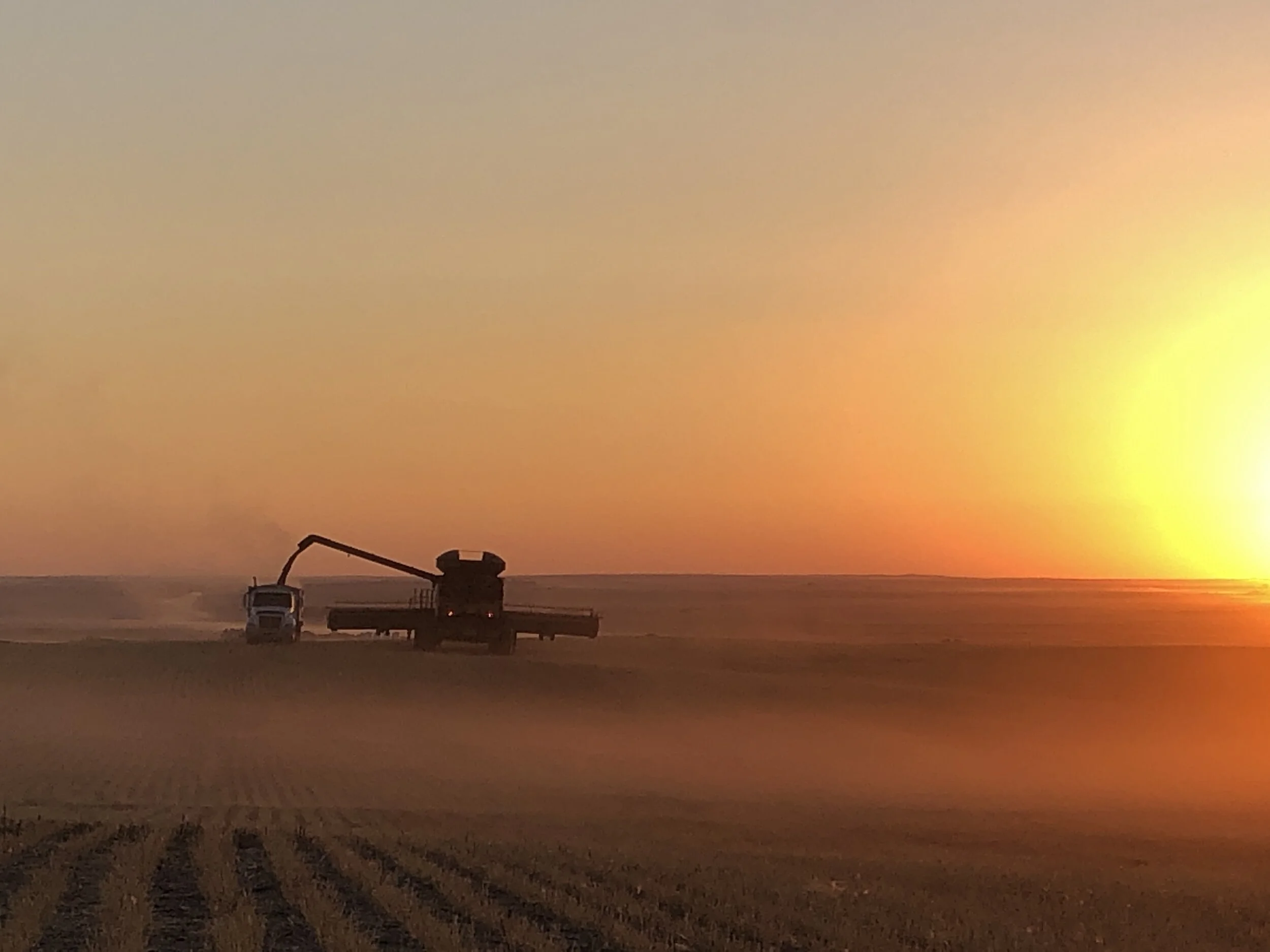Two Must-See Fall Events in Saskatchewan
Want something different to do this month? Well, you’re in luck, because there are two major events happening in our province right now and both are free of charge, yours for the taking. They’re family friendly, you won’t have to fight any crowds and they take place in the great outdoors. Both are easily accessible and truly amazing in their scope and nature, yet most people, city slickers in particular, have yet to discover their beauty and significance. I’m talking about the age-old autumn harvest and the annual bird migration, a phenomena that has been taking place since time immemorial – well, at least since birds learned to fly.
Today’s guest post is written by my dad, Don Kardash. Title photo by Sherry Fenell.
The annual harvest is Saskatchewan’s largest Mega-project. Our province contains about 64 million acres of cultivated land - more than 40% of Canada’s entire cultivated farmland. In 2019 we exported nearly $7 Billion of agri-food products, representing a full 40% of all our provincial exports. Thousands of farmers and their crews are out there swathing, combining and transporting their harvest to storage bins, processing plants or onward by rail and ship to markets around the world.
Take a lunch and find an active field - park, watch and learn where the food chain really begins. Find a hill to give you an overview of the land. Learn to identify the different crops – wheat, oats, barley, canola, flax, rye, peas, corn and many other not so traditional crops, such as canary seed, quinoa and lentils. (Saskatchewan is the world’s largest exporter of lentils, amounting to an astonishing 67% of the worlds export needs. Every lentil you eat reduces that amount, so don’t start now.)
Most of the harvest action obviously takes place in the fields, but watch for related activity in the area, on side roads, in farm yards and around adjacent towns. You have no doubt noticed all of these goings on many times over the years, but take the time now to watch and take in the enormity of it, appreciate the complexities that take place as farmers work to get to this stage and gain a new understanding of just how susceptible their livelihoods are to the whims of Mother Nature. It’s not an easy way to make a living but feeding the world is one of the most important jobs around. And whatever you do, respect the farmers land. Stay out of the crops, stay off land and roads that are posted private. Find a side road and meander, but always pick a safe place to park before getting out to enjoy the buzz of the combine and smell of the thrashed crops.
Next, how can a big flock of birds, water fowl at that, compare to an Agricultural Mega-Project? Well, first off, if you do a bit of research and plan your trip accordingly, you should be able to witness both of these events on the same day and in the same area. Pack a few essentials and make a day of it.
You’ve probably noticed the geese starting to flock. That’s your signal to get out there, upfront and personal to witness the migration, one of nature’s mega-wonders.
photo by Lars Nisen
You don’t have to be a bird watcher to enjoy these marvels of water, land and sky. Just go with an open mind and you’ll find it a wonderfully invigorating way to learn about nature. We have a number of internationally recognized bird sanctuaries in Saskatchewan. Two of my favorites – The Last Mountain Lake National Wildlife Area and The Quill Lakes International Bird Area – are within a few hours driving of Saskatoon and Regina. Nearly 300 bird species have been identified in these areas as they migrate southward. Hundreds of thousands of birds stop to rest and feed near these spots. These wonderful natural environments have inspired and awed people for a very long time. As a matter of fact, in 1887 the Canadian Government designated the wetlands on the north side of Last Mountain Lake as a protected bird sanctuary, establishing it as the first in the world! The easiest way to get there is to head to Simpson, Sk. on Highway #2, hit Grid Road #748 East and follow it for about 14 kms, then follow the sign south to the National Wildlife Area Headquarters. This is also the start of a 14 km driving tour that may be difficult to traverse if it has recently rained. You can park and walk or you can meander the route that ends up at a nice picnic area with laddered viewing platform and walking trails. If the sights and sounds of tens of thousands migrating birds don’t inspire you, then I don’t know what will.
Equally awesome and easy to find is the Quill Lakes International Bird area. One day counts here have topped 50,000 birds, which I don’t need to tell you is a lot of feathers and beaks. The Quill Lakes are bounded by Hwy #5 to the North and Hwy #16 to the South. Hwy #35 runs north/south connecting the two. From Saskatoon take Hwy #5 to Wadena. There hang a right and go south on Hwy #35 for 3.2 km and then follow the signs back westward for 5.6 km at which time you should be at the picnic area and viewing tower. This is also the trailhead for five nature trails that will take you along the lakeshore, between marshes and neighboring grasslands. On the right day, the sights and sounds are spectacular. If you can, stick around until dusk when the cacophony of birds returning to roost for the night will leave you with a new appreciation for our fascinating outdoors.
There are many other accessible birding areas within both sanctuaries, but I’d suggest visiting www.naturesask.ca for more details. My time is up. Now get out there and get a real appreciation for our Land of The Living Skies.
Thank-you to my dad, Don Kardash, for letting me share this piece He was my first-ever guest blogger :)






